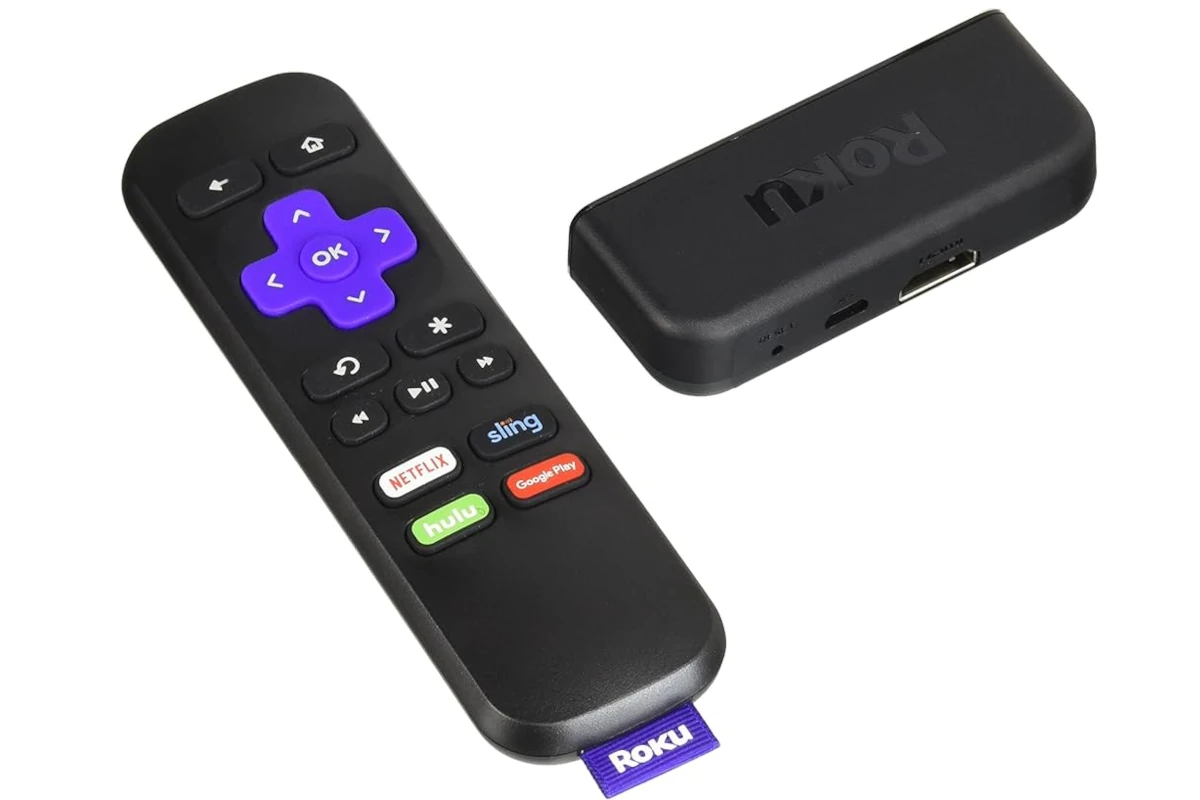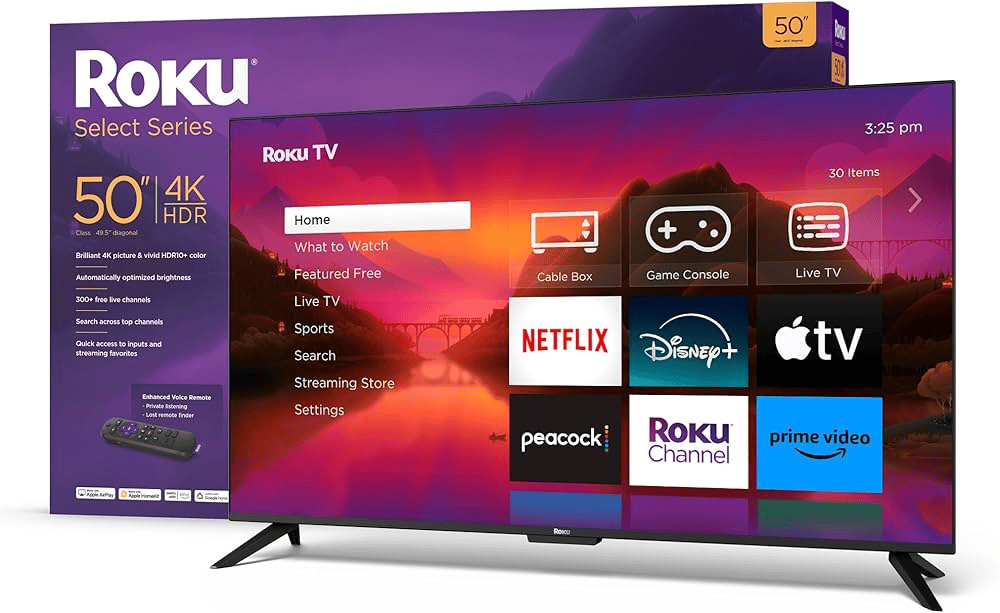Roku devices have become a staple in many households, offering a world of streaming entertainment. But how long does the enjoyment last? Understanding the life expectancy of a Roku device not only helps you make informed purchasing decisions, but also guides you in maintaining your device for prolonged service. On average, a Roku device can last anywhere from 3 to 7 years. This lifespan can extend further depending on usage patterns and maintenance. For instance, a Roku TV used moderately in a home environment may last longer than a Roku stick used extensively in a busy setting.

Understanding Roku Device Lifespan
Factors Affecting Roku Device Longevity
Roku devices are known for their reliability. However, like any electronic device, they have a limited lifespan. Several factors can influence how long your Roku device lasts.
Hardware Quality
The quality of the internal components plays a role. Higher-end Roku models often use more durable components, which can contribute to a longer lifespan.
Usage Patterns
How often you use your Roku and the types of activities you engage in can affect its lifespan. Frequent use and streaming high-definition content can put more strain on the device.
Software Updates
Roku regularly releases software updates to improve performance and add features. Older devices may eventually reach a point where they no longer receive updates or become incompatible with newer apps. This can limit their functionality and effectively shorten their lifespan.
Environmental Factors
Exposure to extreme temperatures, dust, and moisture can damage the internal components of your Roku device and reduce its lifespan.
Typical Lifespan of Roku Devices

While it’s difficult to give an exact timeframe, most Roku devices last between 3 to 5 years with regular use. Some users report their devices lasting even longer. However, after a few years, you might notice performance issues or find that your device is no longer compatible with the latest streaming services.
Signs Your Roku Device May Need Replacing
- Frequent crashes or freezing
- Slow performance or lag
- Overheating
- Inability to connect to Wi-Fi
- Apps not working correctly
- No longer receiving software updates
Extending the Life of Your Roku Device
To maximize the lifespan of your Roku device, consider these tips:
- Keep it in a well-ventilated area, away from direct sunlight and heat sources.
- Avoid unplugging it frequently. Instead, use the remote to turn it off.
- Keep the software updated to the latest version.
- Periodically restart your Roku device to clear temporary files and improve performance.
Comparing Roku Device Lifespan
While all Roku devices generally last a few years, there can be some variation in lifespan depending on the model. Here’s a general comparison:
| Roku Device Type | Typical Lifespan |
|---|---|
| Streaming Sticks | 3-4 years |
| Streaming Boxes | 4-5 years |
| Roku TVs | 5-7 years |
Note: These are estimated lifespans. Actual device longevity can vary depending on usage and environmental factors.
How Long Will Your Roku Device Last?
Roku devices offer a great way to turn your regular TV into a smart TV. But like any electronics, they have a limited lifespan. If you have a Roku device, you might wonder how long it’ll last before you need an upgrade. Here’s what you should know.
Average Lifespan
Roku devices generally have a lifespan of about 3-5 years. That doesn’t mean your Roku will suddenly stop working after a certain time, but you might start noticing some issues as it gets older.
- Roku TV: Lasts up to 5-7 years.
- Roku Stick: Averages between 3-5 years.
- Roku Ultra: Approximately 4-7 years.

What Affects Lifespan
Roku devices, like any electronic gadget, have a finite lifespan. Factors like maintenance, environment, usage, and electrical issues play crucial roles. Regular cleaning, software updates, and providing proper ventilation are key to extending the life of your Roku.
Here are some factors that can affect how long your Roku device lasts:
- Model: Streaming sticks generally last less time than Roku boxes. This is because streaming sticks can be more prone to overheating.
- Usage: If you use your Roku for long periods every day, it might wear out faster than one used sparingly.
- Software updates: Roku keeps updating the software on its devices. Older Roku models might eventually stop receiving new software updates. This makes them less functional over time.
- Physical damage: Dropping your Roku or getting it wet might immediately damage it.
Signs Your Roku Is Getting Old
Here are some signs that your Roku device might be reaching the end of its lifespan:
- Slow performance: The Roku might take a long time to load apps or respond to commands.
- Frequent crashes and glitches: You might experience a lot of freezing and restarts.
- Missing features: New features might not be available on your Roku device.
What To Do When Your Roku Gets Old
When your old Roku starts giving you trouble, consider these options:
| Option | Description |
|---|---|
| Upgrade to a newer Roku model | Get a faster, more powerful device with the latest features. |
| Consider a different streaming device | Compare Roku to options like Fire TV, Chromecast, or Apple TV and see if another brand might be a better fit. |
Recognizing Signs of Wear
Roku devices might begin to show signs of aging through slower performance, connectivity issues, overheating, and failed software updates. These indicators suggest it might be time to consider an upgrade.
The Role of Software Updates
Keeping your Roku’s software up-to-date is crucial for prolonging its lifespan. These updates enhance performance and ensure compatibility with newer applications and features.
When to Replace Your Roku
If you notice a significant decrease in performance or compatibility issues with new apps, it might be time to replace your Roku. Upgrading ensures you continue to enjoy an optimal streaming experience.
User Experiences from the Roku Community
Users on platforms like Reddit share varied experiences with their Roku devices. Some have Roku devices that last beyond 5 years, while others upgrade more frequently to enjoy the latest features and smoother performance.
Maintenance Tips for Roku Devices
- Clean Regularly: Dust accumulation can lead to overheating. Regularly cleaning your device extends its life.
- Software Updates: Always keep the software updated for better performance and new features.
- Ventilation: Ensure your Roku device is placed in a well-ventilated area to prevent overheating.
Environmental Factors and Usage
Your Roku’s environment and usage patterns significantly impact its longevity. A device placed in a dusty, humid, or hot environment or used excessively without breaks may have a reduced lifespan.
Electrical Considerations
Faulty outlets or inconsistent voltage can damage your Roku. It’s crucial to ensure that your electrical setup is stable to avoid harming your device.
What If Your Roku Is Acting Up?
If you notice signs like slow performance or overheating, here are some quick fixes:
- Restart Your Device: Sometimes, a simple restart can solve minor issues.
- Check for Updates: Ensure your Roku is running on the latest software.
- Seek Support: If problems persist, Roku’s customer support can offer solutions.
FAQs
How often should I clean my Roku device?
Regularly cleaning every few months helps prevent dust buildup and overheating.
Can software updates extend my Roku’s life?
Yes, keeping your Roku updated can enhance performance and compatibility, thereby extending its lifespan.
What should I do if my Roku starts overheating?
Ensure it’s in a well-ventilated area, not covered by other objects. If overheating persists, contact customer support.
How long do Roku TVs, sticks, and boxes last? Do Rokus wear out? What is the average life of a Roku?
Roku devices, including TVs, sticks, and boxes, generally last around 3 to 5 years. However, some users report their devices lasting even longer. Like any electronic device, Rokus can wear out over time. Factors like usage, model, and environmental conditions can affect their lifespan.
When should Roku be replaced? How do you know when your Roku is going bad?
Consider replacing your Roku if it experiences frequent crashes, slow performance, overheating, Wi-Fi connection problems, app malfunctions, or stops receiving software updates. These are signs that your Roku might be nearing the end of its lifespan.
Do newer Rokus work better?
Newer Roku models often come with improved hardware, better performance, and the latest features. They also tend to receive software updates for a longer period, ensuring compatibility with newer apps and streaming services.
Does Roku go out of date? Can old Rokus be updated?
Older Roku models may eventually stop receiving software updates. This can lead to compatibility issues with newer apps and services, effectively making them outdated. While some older models can still be updated, very old ones might not support the latest software.
How often should I update my Roku? How do I know if my Roku needs an update?
It’s recommended to keep your Roku updated to the latest software version. Roku typically notifies you when an update is available. You can also manually check for updates in the settings menu. Regularly updating ensures optimal performance and compatibility.
Which Roku models are no longer supported?
Roku periodically discontinues support for older models. You can find a list of no longer supported models on the official Roku website. These models might not receive crucial updates or might have limited app functionality.







